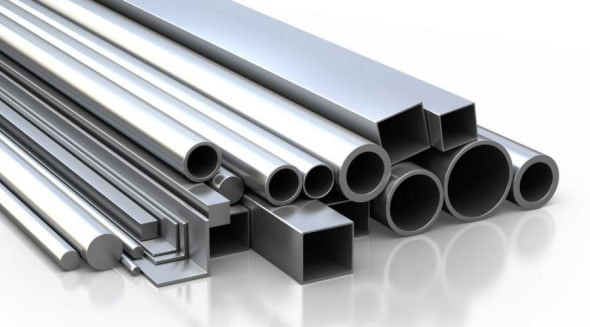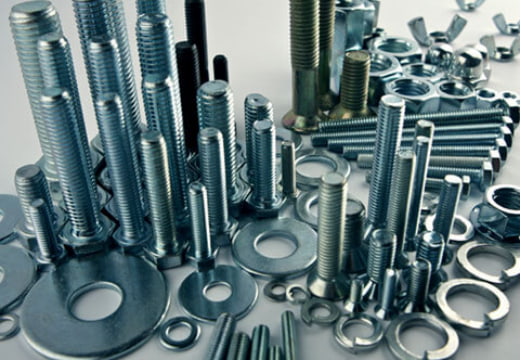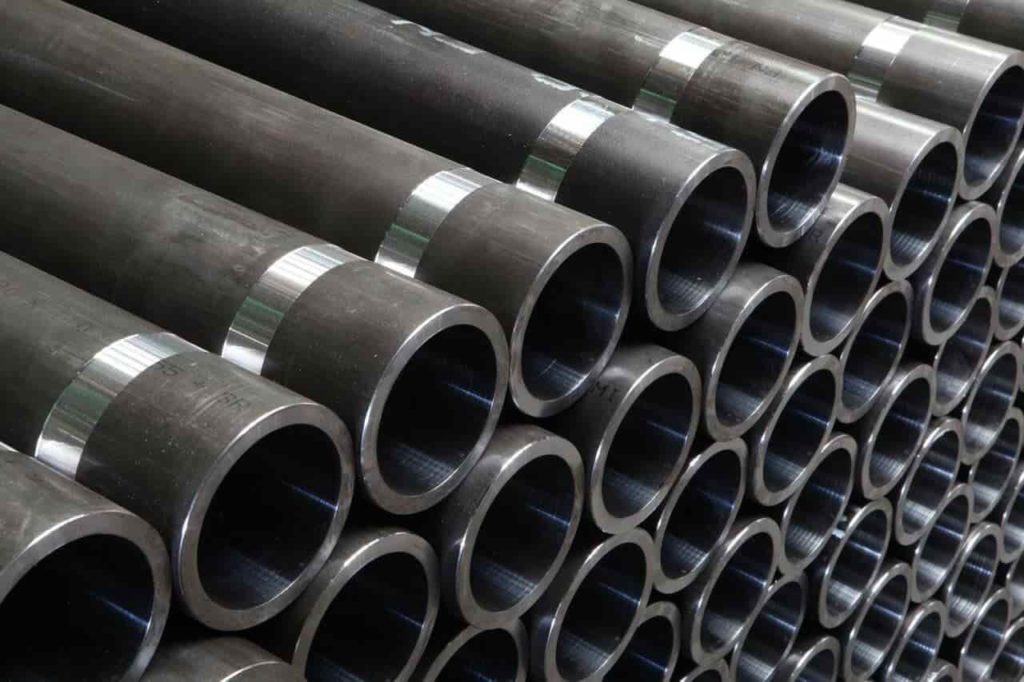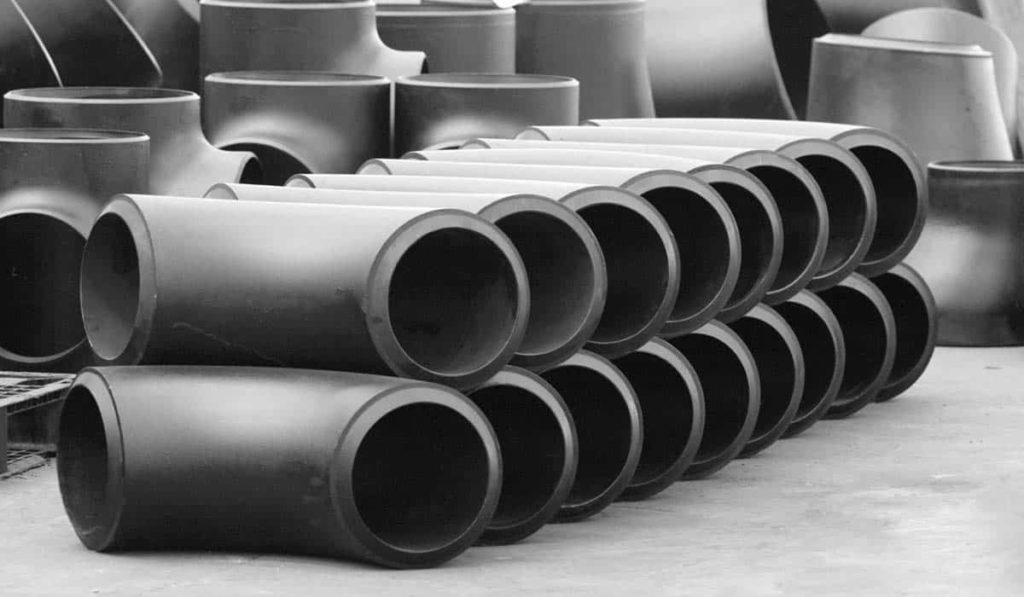Steel is one of the largest industries in the world and is produced by combining iron with other metals and non-metals elements. The purpose of this combination to manufacture steel is to obtain different chemical properties for specific applications. During material selection for steel CNC machining, various properties of alloy steel vs carbon steel for a suitable material selection should be considered. Alloy steel and carbon steel are the two types of steel. Understanding alloy steel and carbon steel differences give us the ability to utilize them accordingly in our respective industry to get benefits from them.
Selecting steel for the manufacturing of CNC machined parts and components is a big challenge. In this article, we will discuss alloy vs carbon steel differences and their types, applications, alloying elements, and properties. This will help you to judge the best steel for your project and get the finest parts and products.
What Is Alloy Steel?

Alloy steel is mixed with several alloying elements such as silicon, chromium, molybdenum, boron, vanadium, nickel, aluminum, etc. These alloying elements increase the strength, toughness, hardness, and wear resistance of the alloy steel. Some of the alloying elements and their effects are shown below.
- Cobalt: Improves the hardness and increases wear resistance and toughness.
- Manganese: Strengthens surface hardness, hammering, and shocks, enhances resistance to strain
- Chromium: Improves toughness and wear resistance, and increases hardness.
- Molybdenum: Increases resistance to heat and shock, and improves strength.
- Nickel: Enhances strength and toughness, and increases corrosion resistance.
- Vanadium: Improves strength, enhances sock and corrosion resistance, grows toughness
- Tungsten: Improves strength and toughness, enhances corrosion resistance
- Chromium-Vanadium: Greatly enhanced tensile strength which makes alloy hard but easy to bend and cut.
Types of Alloy Steel
Alloy steel is the combination of steel with some elements to get unique characteristics and properties. It has two types based on the weight of elements used to form the alloy steel that ranges from 1% to 50%. The flowing will mention two groups of alloy steel.
- High-Alloy Steel: It has a high percentage of alloying elements. The most common type of high alloy steel is stainless steel which contains up to 12% chromium. Chromium makes a thin oxide layer outside of the steel which is known as the latent layer. The large number of chromium provides extended protection from erosion. This type of alloy is a little more costly than low-alloy steel. Thus, it is mainly used in automobiles and industrial equipment.
- Low-Alloy Steel: It has a lower percentage of alloying elements ranging from 1 to 5 percent. This steel has different strengths and applications depending on the alloy used. Besides, large-diameter flanges use this type of alloy to get specific mechanical properties. Consequently, low alloy steel is useful for a variety of projects in a vast number of industries such as studding outlet production and seamless rolled ring forging.
Applications of Alloy Steel

The alloy steel is used in many industrial sectors and it helps manufacture hundreds of products. Their extreme strength, hardness, toughness, and machinability make them the most demanding material for many industries. Consequently, alloy steel is ideal for structural components, automotive, mining, machinery, railway, and many other industries.
- Construction Industry
- Aerospace Industry
- Mining Industry
Tip: You can read our in-depth article about the applications of steel.
What Is Carbon Steel?

Carbon steel is a common type of steel. To define carbon steel in simple words, it is an alloy of iron and carbon. As its name suggests, carbon steel has a higher carbon content with a lower melting point and greater durability as compared to stainless steel. Carbon steel is the most important group of engineering alloys and they account for the majority of the steel applications depending upon processes.
Types of Carbon Steel
The types of carbon steel are ordered and categorized by the carbon content it contains. Then, let’s have a look at some of the types of carbon steel and their characteristics that make them desirable in specific applications.
- Low-carbon steel: It is the most common and widely used form of carbon steel. It contains less than 0.25% carbon content. Low carbon steel is generally weaker and softer and also easily welded and ductile which makes them useful in machining and welding for a low cost.
- Medium-Carbon-Steel: With carbon content ranging from 0.25% to 0.6% and manganese content 0.6% to 1.65%, the mechanical properties of these metals can be improved through heat treatment. Medium carbon steel is stronger but less ductile and tough than lower carbon steel.
- High Carbon Steel: This type of carbon steel is the hardest, with high wear resistance, low ductility, and always hardened and tempered. Additionally, their carbon and manganese content range is 0.6-1.25% and 0.3-0.9% respectively.
Applications of Carbon Steel

Due to carbon steel’s high versatility, it has a number of applications and is employed in a wide range of industries, especially in the petrochemical and oil & gas sector. We have gathered some applications of carbon steel in different industries to elaborate its vast usage in today’s market, such as:
- Shipbuilding
- Pipes and Pressure Vessels
- Construction
If you need more information about the applications of steel, see this article. You can also start your project by clicking the button below now.
What Are the Differences Between Alloy Steel vs Carbon Steel?
Both types of steel that somehow look similar physically have distinct chemical properties. However, these properties make them unique and give industries reasons to employ them and get benefits from them. We have gathered some alloy steel and carbon steel differences to give you a better understanding of both types of steel.
Applications
Alloy steel is used in various industries for the manufacturing of girders, structural sections, aircraft parts, propellers for ships, bars, rails, rods, screws, bolts, nails, and wires. On the other hand, carbon steel is also popular in many manufacturing industries for the production of automobile body components, food cans, wheels, crankshafts, gear, machinery parts, pipes, cutting tools, springs, dies, construction, and bridge components.
Composition
Alloy steel contains a high percentage of alloying elements other than iron and carbon. Whereas, carbon alloy has high carbon content and a low percentage of other elements.
Corrosion resistance
Alloy steel is a good corrosion-resistant material as compared to carbon steel. The alloying elements in alloy steel make it more resistant to corrosion and it also improves its machinability.
Hardness
High carbon content in carbon steel makes it harder. Alloy is less hard as compared to carbon steel.
Strength
Carbon steel is good in terms of strength. Alloy steel also has fine strength but is less than carbon steel.
Toughness
The high number of carbon in carbon steel makes it tougher. On the contrary, alloy steel with different alloying elements other than carbon is less tough.
Malleability
Multiple alloying elements in alloy steel reduce the malleability of the alloy steel. However, the carbon element in carbon steel increases its malleability.
Weldability
Carbon steel possesses high weldability as compared to alloy steel. It is due to a reduced amount of alloying elements (other than carbon) in the iron. It will be more complex to weld steel if it contains elements like boron, magnesium, and silicon.
Ductility
Steel can deform without fracture. It depends upon the alloying elements present in the steel. More carbon elements decrease the ductility of steel. Alloy is high ductile than carbon steel.
Cost
Alloy steel is a very expensive steel as compared to carbon steel. Carbon steel price varies and depends upon the carbon content. The higher the carbon content, the more the price.
Here’s a brief table showing some differences between alloy and carbon steel:
| Alloy Steel | Carbon Steel | |
| Corrosion resistance | Good | Poor |
| Hardness | Low | High |
| Strength | Low | High |
| Toughness | Low | High |
| Malleability | Low | High |
| Weldability | Low | High |
| Ductility | High | Low |
| Cost | Expensive | Inexpensive |
Conclusion
In this article, we have discussed alloy steel vs carbon steel differences to give you an understanding of these broadly used terms in the manufacturing and machining industry. Due to the excellent mechanical properties of alloy and carbon steel, they will continue to play a crucial and dominant role in the future. The formability, cost-effectiveness, and recyclability of these steels have a significant impact on industrial usage. If you are in search of a steel CNC machining partner with impeccable machining capabilities, look no further.
RapidDirect is a leading custom parts prototyping and manufacturing service provider that you can bank on. Our top-notch modern technological machinery has produced prototypes and parts for a number of our valuable clients across the globe. We took pride in our engineering team who has vast prototyping and manufacturing experience. Furthermore, we have a stringent quality control system to ensure you get the best parts and prototypes delivered to you with the utmost quality. Providing products as per the specifications and expectations of our customers is RapidDirect’s paramount priority. Contact us to get prototype production services now.
FAQs About Alloy Steel vs Carbon Steel
The material selection entirely depends upon the project or product requirements. In general, alloy steel has exceptional qualities as compared to carbon steel but one of its major issues is lack of corrosion resistance. Alloy steel is suitable for structural components.
The tensile strength of low-carbon steel is approximately 450 MPa and the tensile strength of high-carbon steel is 965 MPa. The alloy steel has higher tensile strength as compared to carbon steel. The tensile strength of alloy steel ranges between 758 – 1882 MPa.
No. Both are two different materials. Carbon steel consists of iron with carbon added and alloy steel includes various other materials. Adding other materials assists in modifying the physical and chemical properties of the material.


